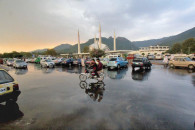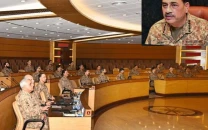Future of learning: from chalk to click
We are moving from technology as a spectacle to technology as a medium of inquiry

As a teacher in a public sector university, I know that real change often arrives quietly. A door opens. A room brightens. The grammar of chalk and talk begins to widen. Our new classroom feels like such a threshold. It has an interactive board, cameras that make distance feel near, and fast networks. Yet these are surfaces. The deeper shift is a change of mind. We are moving from technology as spectacle to technology as a medium of inquiry.
A chalkboard was never only a slab of slate. It was a social contract. We drew ideas, erased them, argued with them, and returned to them. The smart board continues that culture under new conditions. Where chalk traced lines, light now does. Where a diagram stood still, a simulation moves. Where a figure felt final, code makes it revisable. The essence is the same. We gather around a question and share attention to a hypothesis. The form evolves so the essence can endure.
In a public university, scarcity sets habits. We learn to wait. We accept the almost working fix. We applaud the workaround. But the first rule of science is refusal. We refuse to accept that what is given is all that is possible. A classroom that supports hybrid seminars, live coding and collaborative critique is more than a room. It is an ethic. It says our students will not be prepared for a smaller world than the one they inhabit. In a system with tight budgets and many basic needs, alumni led initiatives that build capacity are therefore truly commendable. The alumni of 1995 have shown rare stewardship and quiet courage by turning affection for their department into concrete learning power. Their gift is not only generous. It is wise and deeply timely.
A smart room is a promise. Only disciplined practice can keep it. Three vows help. First, presence over performance. Use technology to make thinking visible. Plot data in real time. Break a problem in public and repair it in public. Offer dignity to the correction. Second, continuity over event. Create steady rhythms. Hold weekly research conversations, record capstone defences, and run short method clinics where one person teaches one tool with one example. Third, the commons over custody. Keep the space open and cross disciplinary so curiosity and not hierarchy sets the order of voices.
When these habits take root, learning deepens. The gap between a paper that is read and an experiment that is attempted begins to narrow. A preprint becomes a living draft that can be tested, critiqued, and even replicated. Excellence starts to feel possible on our own campus.
Reliability comes from care. Power can fail and software can sulk. Spares, simple checklists and trained student helpers keep the room alive. Justice is at stake as well. When a first generation student runs a simulation or presents to an outside audience without leaving campus, the university becomes a bridge and not a gate.
To protect this gain we also need clear routines and small metrics. Publish a shared calendar. Track hours of use, number of talks hosted, and the count of courses that use live coding or remote guests. Build a modest fund for maintenance and basic supplies. Rotate student stewards each term so knowledge is passed on. Create a small archive of recorded method sessions and capstone reviews so future cohorts can learn by example. Invite colleagues from other departments to try the room and to leave suggestions. These careful habits convert a donation into a durable culture of learning.
Some fear that screens will replace faces. That is not the fate of a room. That is a cultural choice. Used wisely, technology serves conversation. When the light dims and the discussion continues, we remember why the room exists. Alumni have given the stage, and the alumni of 1995 deserve our sincere gratitude. It is now on us to write the script and to practice it well.












COMMENTS (2)
Comments are moderated and generally will be posted if they are on-topic and not abusive.
For more information, please see our Comments FAQ